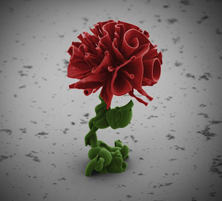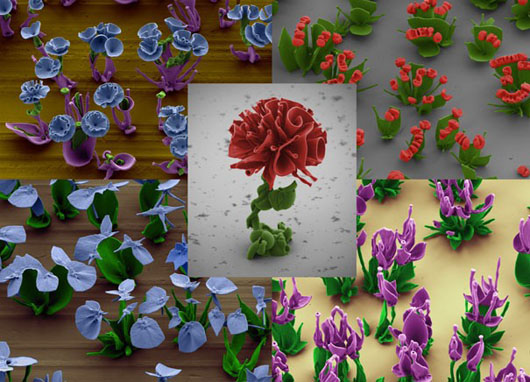Nanoflowers Blossom in Beakers at Harvard Engineering School

Researchers at Harvard School of Engineering and Applied Sciences have created fields of flowers out of crystals spread across glass slides in the laboratory. These aren’t some pygmy variety of flowers that occur in nature, but nanostructures created by manipulating the process of crystal formation.
It is not something conceptualized out of the blue, but an illustration of the process that happens over a long period of time to create complex shapes in nature which has got people intrigued for a couple of hundred years now. The nanostructures resembling flowers are created by precipitation of crystals in a carefully controlled environment where chemical gradients and reaction gradients are manipulated to create precisely tailored structures.
In order to create these structures barium chloride and sodium silicate is dissolved in a beaker along with carbon dioxide present in air which initiates the reaction to precipitate barium carbonate crystals while lowering the pH of the solution around these crystals. The lowered pH in turn triggers a reaction with sodium silicate to add a layer of silica to the growing structures. The second reaction with sodium silicate consumes the acid formed from the first reaction to increase the pH, reinitiating the formation of barium carbonate crystals and so on.
In order to create these beautiful structures, the reaction conditions have to be manipulated to sculpt the crystals to desired patterns as they grow. In this instance, increasing the concentration of carbon dioxide creates “broad leafed” structures while reversing the pH gradient at the right moment leads to the formation of curved and ruffled structures.
This study is aimed at understanding the effect chemical gradients have on biological systems and how it influences growth in nature. Things learnt from these approaches can then be utilized to create new technologies or optimize the existing ones to operate much like the biological systems.
Source: Harvard – SEAS

